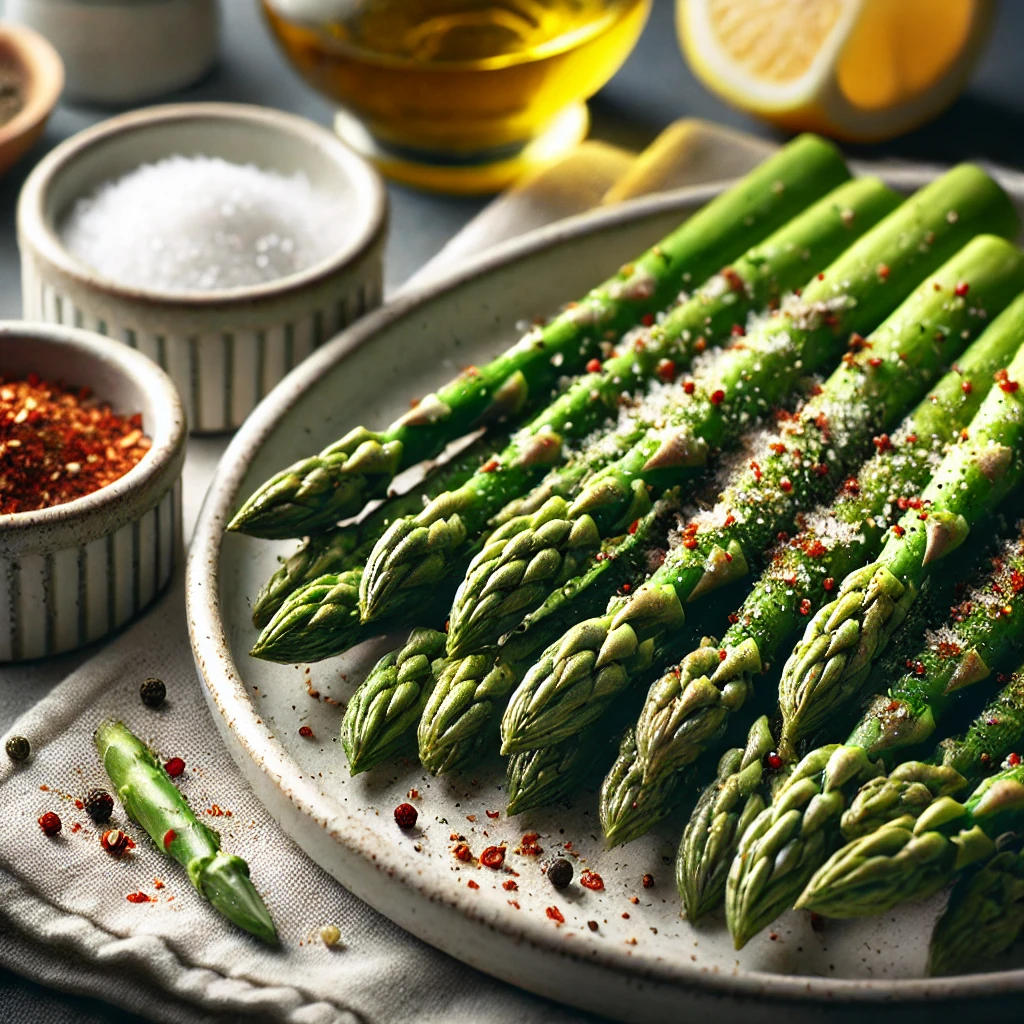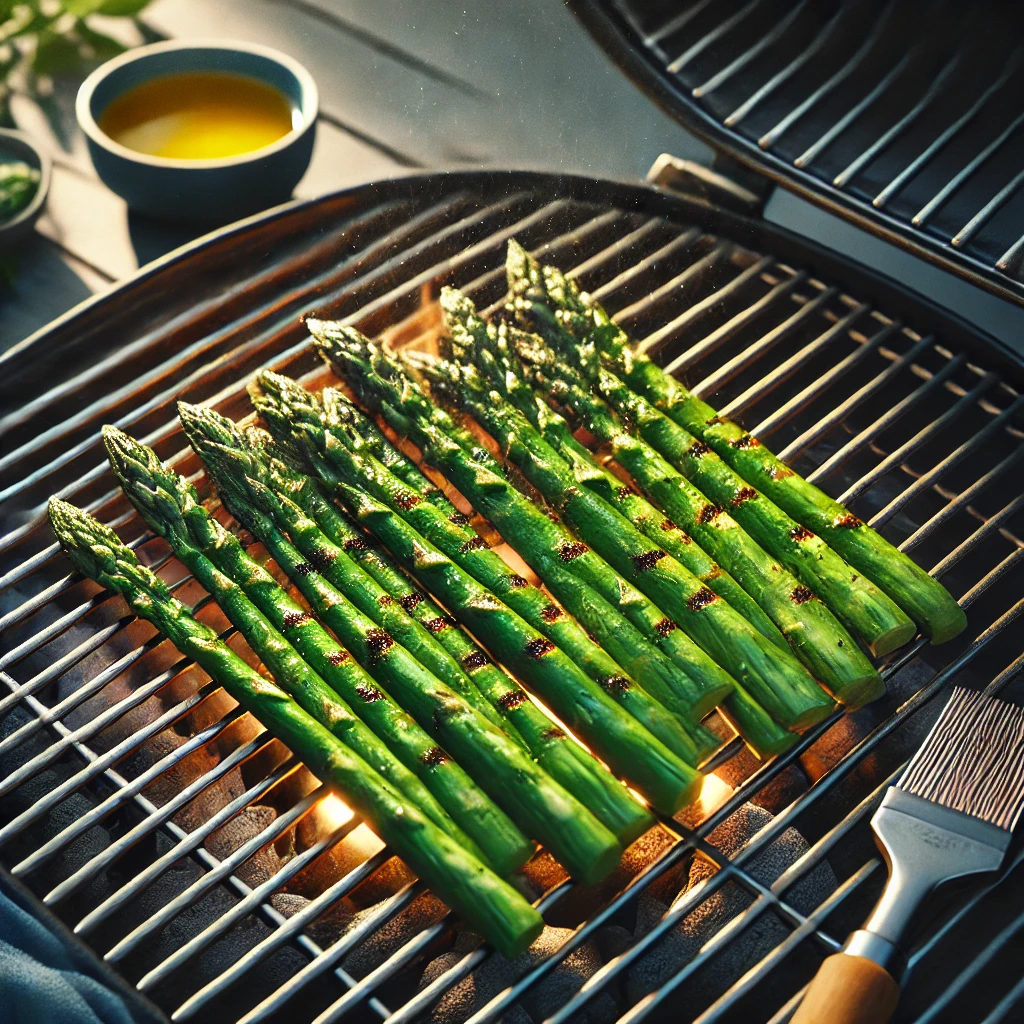Grilled asparagus is a delicious and healthy side dish, known for its smoky flavor and tender-crisp texture. But what happens when your asparagus turns out soggy instead of perfectly grilled? The disappointment of limp, overcooked asparagus is all too common. In this article, we’ll explore why your grilled asparagus might be soggy and provide solutions to ensure your asparagus is always perfectly cooked.
Common Reasons for Soggy Grilled Asparagus
Several factors can contribute to soggy grilled asparagus. Let’s break down the most common culprits and how to fix them.

1. Overcooking
- Why it happens: Asparagus cooks quickly on the grill, and even an extra minute can turn it from crisp to mushy. Thinner spears are especially prone to overcooking.
- How to fix it:
- Use a timer and grill asparagus for 3-5 minutes, depending on thickness.
- Check for doneness by poking the spears with a fork—they should be tender but still firm.
2. Excess Moisture
- Why it happens: If the asparagus is not properly dried after washing or soaking, the excess water steams the spears instead of grilling them.
- How to fix it:
- After washing or soaking, pat the asparagus completely dry with a kitchen towel or paper towel before grilling.
- Avoid marinating the asparagus for too long, as this can also add excess moisture.
3. Low Heat
- Why it happens: Grilling asparagus on low heat doesn’t allow it to sear properly, leading to limp and soggy results.
- How to fix it:
- Preheat the grill to medium-high heat (about 375–400°F/190–204°C).
- Ensure the asparagus is cooked over direct heat to achieve a charred, crisp exterior.
4. Using Too Much Oil
- Why it happens: While oil is essential for grilling, using too much can coat the asparagus excessively, trapping moisture and making it soggy.
- How to fix it:
- Lightly toss the asparagus with oil to coat evenly without drenching it.
- Use a high-smoke-point oil like avocado or canola oil for optimal grilling.
5. Crowding the Grill
- Why it happens: If the asparagus is packed too closely together, the spears don’t get enough air circulation and end up steaming instead of grilling.
- How to fix it:
- Arrange the spears in a single layer on the grill, leaving space between each one.
- If grilling a large batch, cook in smaller portions to ensure even heat distribution.
6. Choosing the Wrong Spears
- Why it happens: Thin asparagus spears cook much faster than thick ones and are more prone to becoming soggy.
- How to fix it:
- Opt for medium-thick spears for grilling, as they hold up better to high heat.
- If using thin spears, reduce grilling time and handle them with care.
How to Avoid Soggy Grilled Asparagus
To prevent sogginess, follow these best practices for grilling asparagus:
1. Prep Your Asparagus Properly
- Trim the woody ends to remove the tough parts of the stalk.
- Dry the spears thoroughly after washing to eliminate excess water.
2. Season Smartly
- Toss the asparagus with just enough oil to coat lightly, then season with salt, pepper, and optional herbs or spices.
3. Use the Right Tools
- If the spears are small, use a grill basket or skewer multiple spears together to make flipping easier and prevent them from falling through the grates.
4. Grill Over Direct Heat
- Place the asparagus perpendicular to the grill grates or use a grill pan to ensure they cook evenly over direct heat.
5. Monitor Cooking Time
- Keep an eye on the asparagus as it grills. Check frequently to avoid overcooking, especially for thin spears.
What Does Perfectly Grilled Asparagus Look Like?
Perfectly grilled asparagus should:
- Have a slight char or grill marks on the outside.
- Be tender but firm to the bite.
- Retain its vibrant green color without turning mushy.
Fixing Soggy Asparagus
If your grilled asparagus turns out soggy, don’t despair! Here are some ways to salvage it:
1. Toss It with Lemon Juice
- Adding a squeeze of fresh lemon juice can brighten the flavor and mask some of the sogginess.
2. Turn It into a Salad
- Chop the asparagus and mix it with fresh greens, nuts, and a tangy vinaigrette for a refreshing salad.
3. Incorporate It into Other Dishes
- Add soggy asparagus to a frittata, pasta dish, or stir-fry, where its texture will blend with other ingredients.
Why Texture Matters
The texture of grilled asparagus is essential for its overall appeal. When asparagus is soggy, it loses the satisfying contrast between the crispy, charred exterior and tender interior. Achieving the perfect texture enhances the flavor and elevates the dish as a whole.
FAQs
1. Why is my grilled asparagus limp?
- It’s likely overcooked or cooked on low heat. Use higher heat and grill for a shorter time.
2. Should I soak asparagus before grilling?
- Soaking is not necessary unless you’re cleaning dirty spears. Be sure to dry them thoroughly afterward.
3. How do I keep asparagus crisp on the grill?
- Use medium-high heat, dry the spears, and avoid overcrowding the grill.
4. What oil should I use for grilling asparagus?
- Use oils with a high smoke point, such as avocado, canola, or grapeseed oil.
5. How can I tell when asparagus is done grilling?
- The spears should be slightly charred and tender when pierced with a fork but not mushy.
6. Can thin asparagus be grilled without getting soggy?
- Yes, but reduce cooking time to 2-3 minutes and monitor closely.
7. Why does my asparagus lose its vibrant color?
- Overcooking causes the green color to dull. Grill quickly to retain its vibrancy.
8. Can I grill asparagus without oil?
- Yes, but using oil helps prevent sticking and promotes even charring.
9. Should I season asparagus before or after grilling?
- Season before grilling for the best flavor infusion.
10. How do I reheat grilled asparagus?
- Reheat in a skillet over medium heat to restore some of the texture.
Grilled asparagus doesn’t have to be soggy! By following these tips and avoiding common mistakes, you can enjoy perfectly charred, tender-crisp asparagus every time.

